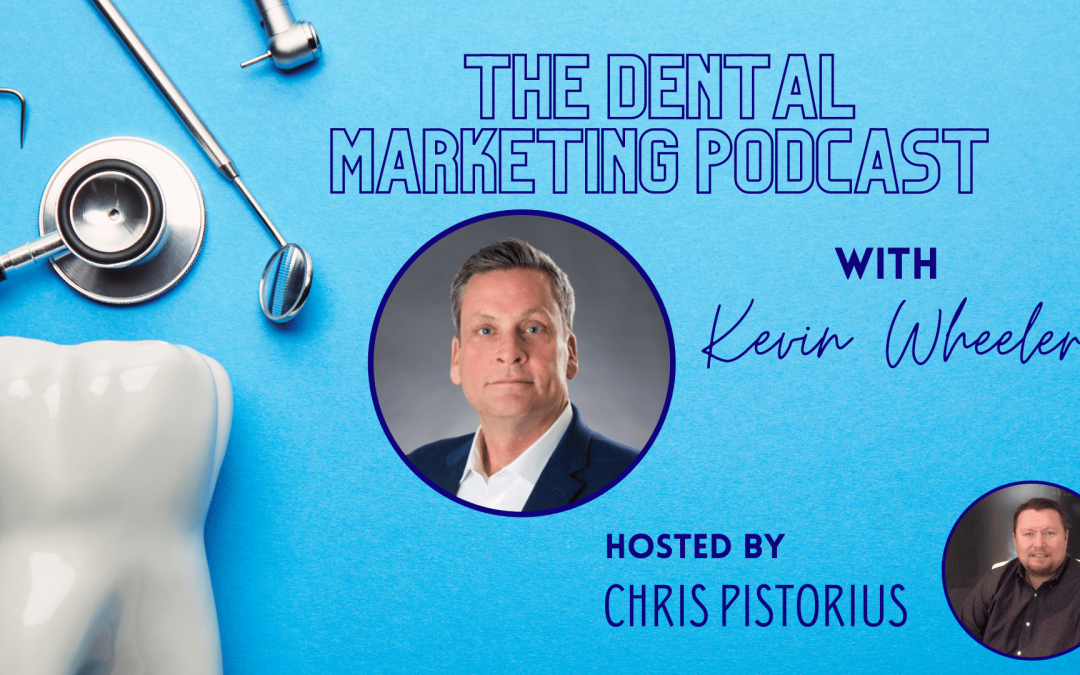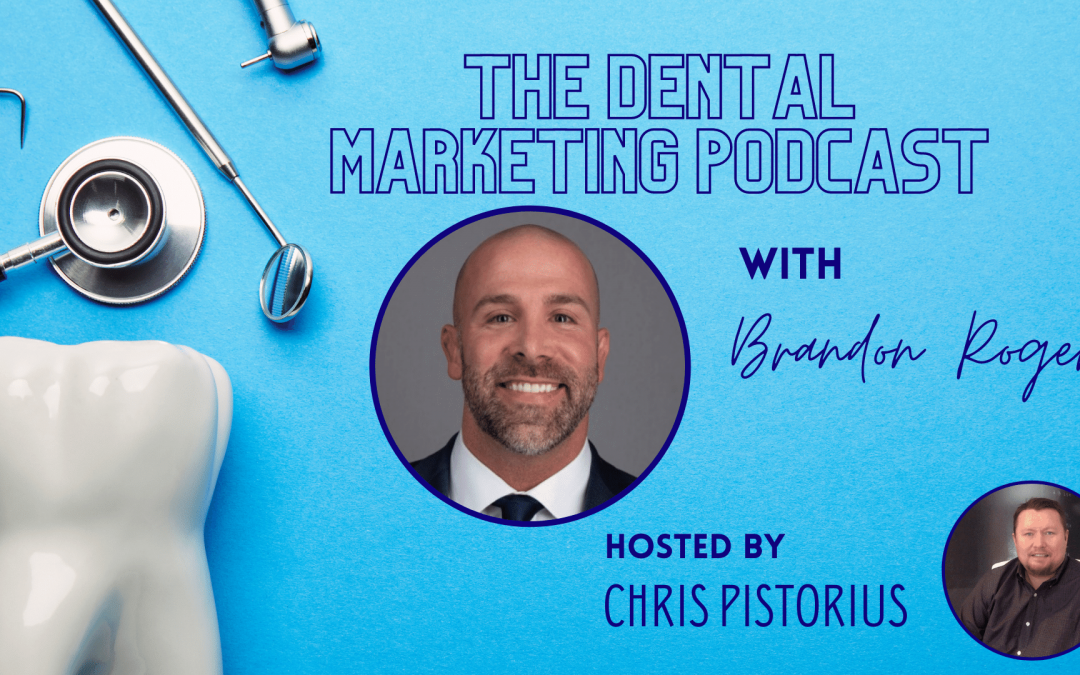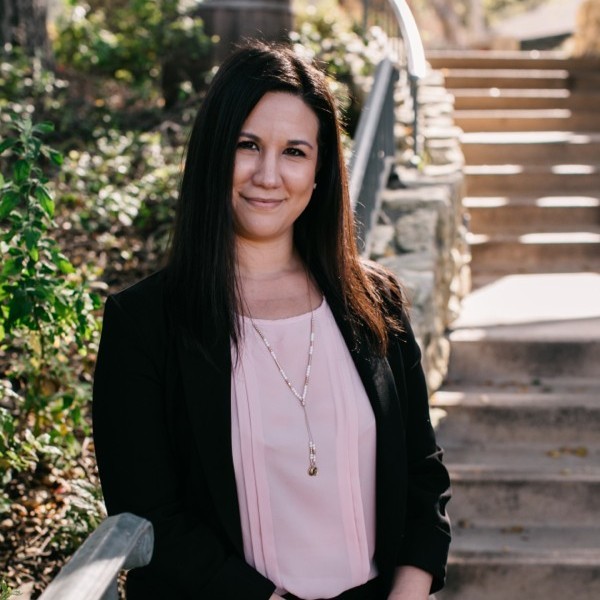
Need a COO For Your Dental Practice? It May Be Easier & More Affordable Than You Think
In this episode, Chris speaks with Kevin Wheeler, president at Simplified COO, about how dental practices can benefit from having a Chief Operating Officer and just how easy & affordable it can be.
This is an episode you don’t want to miss!
View Full Transcript
Chris Pistorius (00:04):
Hi everybody. This is Chris Pistorius again with you with the Dental and Orthodontic Marketing Podcast. Thanks for joining us today. And Kevin Wheeler, who is the President of Simplified. Oop, did I do that right? Simplified COO, did I get that right, Kevin?
Kevin Wheeler (00:20):
You did.
Chris Pistorius (00:21):
Gee, I just balked right there, but … So Kevin is the President of Simplified COO, and this is a really cool concept. And by the way, Kevin is our guest today.
Chris Pistorius (00:31):
And this is something we haven’t really talked about here on the podcast, is being able to bring in a COO when you don’t really need a COO, if that makes sense. So you bring somebody in that can help you out as a COO role, but you don’t have to have them full-time and you don’t have to pay them full-time money. But Kevin, you know way more about this than me. Why don’t you tell us a little bit about what you do and why you do it?
Kevin Wheeler (00:58):
Yeah, Chris. So I saw a need … I have many years background in large dental service organizations. And what I saw was a real need from the smaller that wanted to grow, whether it’s organic growth or whether it’s locations that they want to add. And that’s where my mindset is to help in any way I can. And so I was like, “Let me get involved with that.”
Kevin Wheeler (01:21):
Now, the cost is the prohibitive part of a lot of the smaller group practices. So I started a business as a fractional chief operating officer. And my goal was to be able to offer my services at really a fraction of the price of what a full fledged COO would be. And then my goal is to help in any way that I can, because there’s a lot that wraps into that. I do a lot of coaching, I do a lot of project work. Sometimes they just need a SOP manual created for their group. Sometimes they need everything.
Kevin Wheeler (01:59):
And so I have clients that range from three offices, two offices, to … Really the sweet spot seems to be the 10 to 20, is where people are trying to get to and what that dynamic difference is. And then my goal is to get them so financially secure that they can then find a chief operating officer that can be boots on the ground moving forward.
Chris Pistorius (02:23):
Wow, so you’re working your way out of a job, right?
Kevin Wheeler (02:26):
That’s true, that’s true. But onward and upward to the next opportunity.
Chris Pistorius (02:31):
Yeah, right.
Kevin Wheeler (02:31):
And so that’s how I want to create more of a footprint on helping many groups in dentistry, since it’s moving towards the group practice anyway. My goal is, we all do better in the dental field if we’re all doing well.
Chris Pistorius (02:46):
Right.
Kevin Wheeler (02:46):
There’s not really a competition. It’s more of an opportunity for patients to get good care wherever they go.
Chris Pistorius (02:54):
Right. So what made you think of this? You’ve been doing this for six or so years now, right?
Kevin Wheeler (03:00):
Yes, yes. Yeah. Again, having that background, working with a lot of different larger DSOs. I had a lot of success and it was really fun and I was honored to be able to work for them, but in the end I was just part of a larger wheel. And I just wanted to break off and be able to have a bigger impact than just making one region or one company successful. I wanted to make multiple providers successful.
Chris Pistorius (03:31):
Right.
Kevin Wheeler (03:31):
So that was really where my heart was in.
Chris Pistorius (03:34):
Yeah. Well, that’s awesome. I think it’s a great concept. How many practices do you typically work with at one time?
Kevin Wheeler (03:43):
Usually, depending on the size of the groups, I can do about six where I have the bandwidth to make sure that I give them the time.
Chris Pistorius (03:50):
Okay.
Kevin Wheeler (03:50):
But I’m always working with groups on what can they financially afford, what do they need. And so sometimes I’ll move around where I’ll just have one group, and then other times four or five. And six seems to be about as far as I would want to go to, again depending on the size of those groups.
Chris Pistorius (04:10):
Yeah.
Kevin Wheeler (04:11):
Because I want them to get the attention they deserve.
Chris Pistorius (04:13):
Right, right, right. Now, do you work with individual practices at all too or is it mostly just groups?
Kevin Wheeler (04:18):
Yes. Yeah. Yes, I worked with individual, and a lot of those requests come with coaching on case acceptance.
Chris Pistorius (04:25):
Oh, I see.
Kevin Wheeler (04:25):
And so all in all, that’s a big passion of mine because that’s an immediate impact in revenue. So there’s a lot of systems that I can create, but really, when you see immediate impact on revenue then everyone gets excited. And they’re more open to listening to other ideas that you have.
Kevin Wheeler (04:48):
So I dive right into the case acceptance because it’s fun. It really starts on that patient experience journey, all the way to them saying yes to the dentistry that’s needed.
Chris Pistorius (04:57):
Right, right, right. So it’s almost like hiring a coach or a consultant, but packaged as a fractional COO, would that be a [crosstalk 00:05:07]?
Kevin Wheeler (05:07):
Yes. Yeah, yeah.
Chris Pistorius (05:08):
Okay.
Kevin Wheeler (05:08):
I mean, there’s so many great consultants out there and business coaches, I try to view myself a little bit different because I’m going to get much more involved. I’m not just sharing good ideas and then following back up of how those ideas worked. I make a lot of visits, I’m on the road a lot.
Chris Pistorius (05:28):
Okay.
Kevin Wheeler (05:28):
And so I get into the office and make sure that I can see the systems working as much as possible. And I’m there with them, holding their hand through the process of, again, whatever they need.
Chris Pistorius (05:42):
Yeah, [crosstalk 00:05:42].
Kevin Wheeler (05:42):
So it’s much more detailed than what consultants would get.
Chris Pistorius (05:46):
Right. I see. Gotcha. So what kind of tips or advice would you give somebody … We’re all coming out of this COVID fog, if you will. What do you see going on in the industry now? Do you see the industry as a whole rebounding, or some things that you’re telling the practices that you work with on how to come out of COVID?
Kevin Wheeler (06:06):
Yeah. So the one thing I noticed right away that with the slowdown initially in the pandemic, it gave an opportunity to go back to the basics. To go back to some systems that maybe were in place and just got lost. And we’re still at that point where this is a great opportunity to reset.
Kevin Wheeler (06:28):
A lot of people know what to do, they just don’t know how to implement it and how to follow through. And that’s where they need some help. And coming out of the pandemic, that’s a big focus of mine is, okay, let’s reset. Let’s get back to the basics. Let’s make sure the patients are having an amazing experience.
Kevin Wheeler (06:50):
And so one thing that I tell a lot of my clients is dentistry now where it stands is first a behavioral art, and second a clinical science. And the groups that understand that and embrace that are really successful. And the ones that aren’t, are having a little bit more of a struggle coming out of it.
Chris Pistorius (07:08):
Right. Yeah. That totally makes sense, for sure. So how long do you work with, when you’re doing this fractional COO services, what’s a typical length that you’re with them until you’ve have worked your way out of a job?
Kevin Wheeler (07:21):
For the ones that I am doing the full COO services, it seems to be about two years, maybe just a little bit under that, where they’re … Again, my goal is to get them there as quickly as they’d like.
Chris Pistorius (07:34):
Right.
Kevin Wheeler (07:35):
But normally I stay engaged because there’s a lot of things I can do as far as helping them find new practices. What I really thrive on is creating a relationship. So it never truly goes away. And I help them actually recruit and train [inaudible 00:07:55] if they want.
Kevin Wheeler (07:56):
So I want to make sure that they feel really good moving forward. And then I still get lots of phone calls on, “Let’s talk about some stuff that we had done before. And so, yeah, so it’s ongoing. But for the most part, it’s right in that just under two years.
Chris Pistorius (08:13):
Yeah, awesome. What do you like most about the dental industry?
Kevin Wheeler (08:18):
Oh, the relationship building. I mean, it’s a relationship business. Some people don’t like to talk about it as a sales job, but in the end it is. So you’re selling yourself, you’re building that trust. And so I actually like that, and I like how it trickles down then to the patient experience.
Kevin Wheeler (08:41):
So it’s from the moment you pick up that phone, the information that you get, that’s different from any other dental office. That’s what I always coach. We need nuggets on how we’re going to apply the value of the dentistry, not cost, to the patient. And the only way to do that is to find a way to connect with a patient.
Chris Pistorius (09:00):
Yeah.
Kevin Wheeler (09:01):
So it’s really the connection from the doctor, to the team, to the patient, that I really enjoy.
Chris Pistorius (09:06):
Yeah, absolutely. What do you least like about the dental industry? What would you like to change about it if you could?
Kevin Wheeler (09:16):
I’m a very optimistic person so I haven’t really given a lot of thought in that. Again, like I say, I don’t view that we’re in competition with each other, different offices. I guess what I would like the least are just those groups that still are in that clinical science minded. The degree on the wall and the white coat mean you should move forward with dentistry, because those days are just done, and so …
Chris Pistorius (09:46):
Right.
Kevin Wheeler (09:46):
But it also, those opportunities when I’m given, I’m able to show those people. So really what I dislike ends up being a great opportunity to help them get to the goals that they have.
Chris Pistorius (09:56):
Yeah. Yeah. Are you seeing a churn at all in terms of what you talked about, the more traditional dentists that are … Maybe call them the baby boomer dentists, the guys that are retiring now, and then the new folks are coming in. Are you seeing a big churn going on between those two generations?
Kevin Wheeler (10:15):
Yeah, yeah.
Chris Pistorius (10:16):
Okay.
Kevin Wheeler (10:16):
I mean, for the seasoned dentist, there’s more emphasis on what will my legacy be. And there’s so many opportunities now for exit strategies-
Chris Pistorius (10:27):
Right.
Kevin Wheeler (10:27):
… whereas before they didn’t really think about it until the end, and then they were like, “Gosh, what am I going to do?” Now there’s many groups that approach these dentists and say, “Hey, when are you going to retire? You know, we’re here for you.” A lot of the dentists received letters from group practices saying, “Hey, do you want to sell?” So that opportunity.
Kevin Wheeler (10:48):
And then from the new, there’s really an openness, an excitement, a buzz for the new graduates, that’s an all-time high because they know they have the opportunity for private. They know they have the group practice. It’s just created more opportunities, and so there’s a lot more buzz around their success.
Chris Pistorius (11:11):
Right. And do you ever see a situation where you go in and help a new person, whether they’re starting from scratch or they’re buying an existing practice, do you get into that business at all?
Kevin Wheeler (11:20):
Yes. Yeah, yeah.
Chris Pistorius (11:21):
Okay.
Kevin Wheeler (11:21):
Quite a bit. So whether they’re looking for an acquisition or starting up a Denovo, that was actually in the larger DSO world, that part of my life. That was my biggest focus, was to help those doctors get ramped up quickly.
Chris Pistorius (11:37):
Oh.
Kevin Wheeler (11:38):
And taking some of the older mindset of that, when you get your new practice, you work a couple of days a week. You do all the hygiene. You plan a strategy of month eight and you’re going to add specialty if you’re going to do that.
Kevin Wheeler (11:54):
And what I found is, if you put in the marketing efforts and you’re going to get patients on the books, let’s say 80 patients, are going to be on your books as you’re opening your office, you need to get going right out the gate and assuming that those patients are going to say yes to dentistry.
Chris Pistorius (12:11):
Right.
Kevin Wheeler (12:12):
So I do a lot of coaching on, “Let’s get started quicker. You can get out of cash burn in month three if you’re diligent about it.” It doesn’t take the old mind of month nine.
Chris Pistorius (12:24):
Right.
Kevin Wheeler (12:25):
And sometimes I’ve seen it as well as month two.
Chris Pistorius (12:29):
Right.
Kevin Wheeler (12:30):
So that’s a focus that I like to get involved with.
Chris Pistorius (12:35):
Gotcha. What would you say to somebody coming out of school or maybe they’ve been an associate for a year or two, they’re ready to do their own practice, start from scratch, or take over an existing practice?
Kevin Wheeler (12:44):
Ooh. Some of that has to deal with their finances, so we have to be realistic. And they’re going to have probably a lot of bills coming up, a lot of school fees and whatnot. So I would say, my advice would be not to jump right into their own practice right out the gate. Again, there’s so many opportunities to join groups or to join other doctors that will give a little bit of mentorship. And they can start planning immediately on what that looks like on their own exit to their own private office.
Kevin Wheeler (13:17):
But it’s a big hurdle, because you’ve got so much knowledge in your head as a new dentist. You’re not even thinking about what the patient experience is going to be like.
Chris Pistorius (13:28):
Right.
Kevin Wheeler (13:28):
You’re just thinking about, “How am I going to do this crown? How am I going to do this filling? How many patients will I see? What is the flow going to be?” So you really got to get some practice.
Kevin Wheeler (13:37):
And so I have talked to a lot of the new grads that are like, “My dad’s going to … My mom’s going to help me get an office rolling right away.” And I don’t want to bash their goals, but I’m like, “Okay, but just think about it, you don’t have to rush into this.”
Chris Pistorius (13:52):
Right.
Kevin Wheeler (13:53):
You can get a lot of experience by jumping in with a group.
Chris Pistorius (13:57):
Yeah, yeah. And not only that, but what I find is in, and I’ve said this several times on this podcast, but we find new dentists coming out of school. They know a lot about dentistry certainly, but that doesn’t necessarily mean that they know a lot about business.
Kevin Wheeler (14:10):
Right.
Chris Pistorius (14:11):
And there’s a book out there called The E-Myth Revisited I think it is, where they talk about being good or being at the technical work of [inaudible 00:14:21] of something. Like being a skilled technical worker is great. But if you don’t know how to do the books, how to do sales, how to do marketing, anything else, you’re probably not going to have a successful business.
Kevin Wheeler (14:32):
Right.
Chris Pistorius (14:34):
I think you’re right. I think new people can learn not only and refine their skills, but also learn about business as well.
Kevin Wheeler (14:41):
Yeah. I mean, gosh, I wouldn’t want to take those two on right out the gate.
Chris Pistorius (14:44):
Right.
Kevin Wheeler (14:45):
My clinical aptitude and then my business acumen-
Chris Pistorius (14:48):
Right, right.
Kevin Wheeler (14:49):
… that’s a tall mountain to climb right out gate so soon.
Chris Pistorius (14:52):
Yeah, yeah, for sure.
Kevin Wheeler (14:53):
But those that really want to do it, they just need to reach out and look for help.
Chris Pistorius (14:57):
Right.
Kevin Wheeler (14:58):
Because there’s a lot of help out there, they don’t have to do it alone.
Chris Pistorius (15:01):
Right.
Kevin Wheeler (15:01):
They’ll have to work that into their finances, but there’s people out there such as myself that that’s there to support them.
Chris Pistorius (15:07):
Yeah. Yeah. Well, great. Now when you work with practices, new or existing, I’m sure you get into some of the marketing aspects of things too. What have you seen work great for dental practices in terms of marketing and bringing in new patients?
Kevin Wheeler (15:21):
Yeah. I mean, for me, the internal referral is huge.
Chris Pistorius (15:27):
Sure.
Kevin Wheeler (15:27):
You’re going to have to spend money to get people on the books. Once they are, it’s going to be the buzz around the community.
Chris Pistorius (15:35):
Right.
Kevin Wheeler (15:35):
So I’m really big on keeping things in line. Marketing can get expensive, but it’s very necessary. So while you’re pouring in those dollars into that, make sure that everyone is a raving fan of you.
Chris Pistorius (15:48):
Right.
Kevin Wheeler (15:49):
That you’re thinking about, and I talk about this a lot with teams, why would somebody drive past three dental offices to get to yours? And if you’re not thinking about that every day and pretty much in front of every patient, then you’re missing an opportunity.
Chris Pistorius (16:05):
Right. Yeah.
Kevin Wheeler (16:06):
So there’s a lot of competition out there, and so we have to be thinking, how are we going to be different?
Chris Pistorius (16:12):
Yeah.
Kevin Wheeler (16:12):
So internal referrals, having a great experience. I love having new patient gifts, they come in. Making sure again, if you apply what they need done clinically to the value of what’s important to them, then you’re going to be good with the internal referrals. And then have your team get out there and do some business to business, shake hands, kiss babies, all that stuff.
Chris Pistorius (16:39):
Right, yeah.
Kevin Wheeler (16:39):
You need your community to know that you’re there.
Chris Pistorius (16:42):
Right.
Kevin Wheeler (16:42):
And I have a big passion. For many years, I’ve gotten involved with outreach. And so anytime I get into an office, I asked them to consider partnering with a homeless shelter or Toys for Tots. Or whatever they feel passionate about and bring that into the dental office, because that gives a unique experience to the patient.
Chris Pistorius (17:03):
Sure.
Kevin Wheeler (17:04):
You can actually give back to the community and they see that you care about something other than dentistry as well.
Chris Pistorius (17:10):
Right.
Kevin Wheeler (17:10):
And that helps build a relationship. So that goes really wide as an overview, but that’s basically it.
Chris Pistorius (17:20):
Awesome. Awesome. Well, thanks, Kevin. I really appreciate your time. This has been really good information. I know that our base is going to get a lot of great info out of this.
Chris Pistorius (17:31):
If somebody is watching this and they’re like, “Yes, I need some help like this,” what’s the best way to reach out to you and work with you?
Kevin Wheeler (17:38):
Yeah. So I have a website Simplified COO-
Chris Pistorius (17:41):
Okay.
Kevin Wheeler (17:43):
… so they can definitely reach out to that. I’m on LinkedIn, they can look up for Kevin Wheeler specifically. And my email is simplifiedcoo@yahoo.com.
Chris Pistorius (17:56):
What’s the process when somebody reaches out to you, do you a free consultation or something like that?
Kevin Wheeler (18:01):
Yes.
Chris Pistorius (18:01):
Just see where you are? Okay.
Kevin Wheeler (18:02):
Yeah, yeah. So free consultation. I’m not really big on the contracts because again, I build my business around relationships. And at any time, if they don’t see the value of the services, I’m not going to hold them to anything specifically.
Chris Pistorius (18:15):
Right, yeah. [crosstalk 00:18:17].
Kevin Wheeler (18:16):
I’m more about I’m here to serve, and I hope to be a good fit for them.
Chris Pistorius (18:21):
Awesome. Kevin, thanks again so much for taking the time. I know that this is going to be hugely valuable for a lot of people.
Kevin Wheeler (18:29):
Thank you, Chris. I appreciate you.
Chris Pistorius (18:30):
Great. And thanks everybody for tuning in for another episode of the Dental and Orthodontic Marketing Podcast. Be sure to check back with us next week for another great guest.





